AS THE National Energy Regulator of SA takes its hearings on Eskom’s application for more money around the country, for the third time in as many years, it’s worth reflecting on the changing face of Eskom, which has lost an extraordinary number of senior people over the past three years.
Starting with the resignations of former chief financial officer Paul O’Flaherty and former CE Brian Dames in 2013, the list includes about a dozen departures at executive committee or senior GM level, plus several more at the core GM level.
Like Caroline Henry, the long-time Eskom treasurer whose resignation was announced last week, many of those who have left had worked at Eskom for 20 years or more.
Some resigned or took early retirement for quite straightforward reasons; others walked out because they simply couldn’t take it any more.
There were a good few instances of people who eventually agreed to resign in return for good packages after they were suspended for no good reason except, perhaps, that they had refused to go along with deals they deemed dodgy.
The board’s bizarre suspensions of former CE Tshediso Matona, former chief financial officer Tsholofelo Molefe and the then head of the build programme, Dan Marokane, made headlines last year — all were subsequently completely exonerated and resigned. There were other lower-profile, but similarly groundless suspensions of senior executives in coal and information technology during 2014; they too ultimately left. And at least one executive was asked to resign on the grounds that they didn’t "fit".
Those who have gone include people who had long experience and expertise in Eskom’s core mandate of keeping the lights on, such as former executive committee members Erica Johnson, Kannan Lakmeeharan, Steve Lennon and Robbie van Heerden, but also legal and regulatory experts, procurement executives and others. The race for the exits, along with the daily load shedding, picked up particularly during the tenure of acting CE Collin Matjila in 2014.
It continued under CE Brian Molefe, who was brought on board in April last year. But the load shedding did not last, at least not for long. As Eskom has been trumpeting lately, SA has now had five months without load shedding. The organisation is hardly in optimal shape, operationally or financially, but it certainly no longer seems to be in crisis mode. So is it all just smoke and mirrors? Or is this the beginning of a real turnaround?
It is possible that some of the people who have gone were dispensable, or not that good at their jobs. But it is extremely unlikely that all of them were. A huge repository of institutional memory and expertise has been stripped out of Eskom over a relatively short period. It is hard to believe that this does not pose significant risks to an organisation that was quite fragile to start with.
Against this, Eskom has always been an organisation that manages risk in part by ensuring there are layers of skilled people who can do the job in crucial areas such as national control, whose task it is to balance the system and keep the lights on. So there have been people in place to take over — and if there is damage, it may be seen only in the longer term, when the loss of more senior people to train and mentor and guide takes its toll.
There clearly was scope to do things differently, especially after the leadership crises of 2013-14, and Molefe is said to have brought discipline and business acumen to an organisation that urgently needed it.
One insider describes him as a fast learner, who has worked hard to understand the business and asks all the right questions. He is adept at navigating the complex politics of it too, and he is particularly good at spin.
This makes it difficult to assess whether the lights have stayed on because the performance of Eskom’s power stations really has improved, or because the economy is a wreck, demand is right down and Molefe got lucky. There do seem to have been fewer accidents than in the year before he arrived, although that could in part be due to vigilant leadership. He may still be keeping the lights on as Eskom used to, by doing less maintenance than it should and relying on large customers for help. But it’s hard to tell — especially given that Eskom quietly stopped providing regular hard numbers on the state of the power system in May, not long after Molefe arrived.
There’s a daily deluge of good news media releases, but just occasional, carefully selected numbers. A media release last month said the energy availability factor, a crucial number that tells how much of Eskom’s generating capacity is available, "has improved to as much as 74.4%, from an average of about 70.3%" — suggesting that while they might get it up to a still-poor 74% every now and again, the average has been a lot lower.
One looked in vain through the 205-page tariff application document for more detail — all it has is rather elderly data from the 2013-14 financial year. So the question of whether SA can yet look forward to a reliable supply of power remains open. And with Eskom asking for a 16% tariff increase, there’s no chance of an affordable supply anytime soon.
• Joffe is editor at large
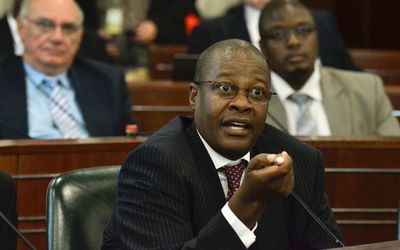
Brian Molefe. Picture: TREVOR SAMSON
AS THE National Energy Regulator of SA takes its hearings on Eskom’s application for more money around the country, for the third time in as many years, it’s worth reflecting on the changing face of Eskom, which has lost an extraordinary number of senior people over the past three years.
Starting with the resignations of former chief financial officer Paul O’Flaherty and former CE Brian Dames in 2013, the list includes about a dozen departures at executive committee or senior GM level, plus several more at the core GM level.
Like Caroline Henry, the long-time Eskom treasurer whose resignation was announced last week, many of those who have left had worked at Eskom for 20 years or more.
Some resigned or took early retirement for quite straightforward reasons; others walked out because they simply couldn’t take it any more.
There were a good few instances of people who eventually agreed to resign in return for good packages after they were suspended for no good reason except, perhaps, that they had refused to go along with deals they deemed dodgy.
The board’s bizarre suspensions of former CE Tshediso Matona, former chief financial officer Tsholofelo Molefe and the then head of the build programme, Dan Marokane, made headlines last year — all were subsequently completely exonerated and resigned. There were other lower-profile, but similarly groundless suspensions of senior executives in coal and information technology during 2014; they too ultimately left. And at least one executive was asked to resign on the grounds that they didn’t "fit".
Those who have gone include people who had long experience and expertise in Eskom’s core mandate of keeping the lights on, such as former executive committee members Erica Johnson, Kannan Lakmeeharan, Steve Lennon and Robbie van Heerden, but also legal and regulatory experts, procurement executives and others. The race for the exits, along with the daily load shedding, picked up particularly during the tenure of acting CE Collin Matjila in 2014.
It continued under CE Brian Molefe, who was brought on board in April last year. But the load shedding did not last, at least not for long. As Eskom has been trumpeting lately, SA has now had five months without load shedding. The organisation is hardly in optimal shape, operationally or financially, but it certainly no longer seems to be in crisis mode. So is it all just smoke and mirrors? Or is this the beginning of a real turnaround?
It is possible that some of the people who have gone were dispensable, or not that good at their jobs. But it is extremely unlikely that all of them were. A huge repository of institutional memory and expertise has been stripped out of Eskom over a relatively short period. It is hard to believe that this does not pose significant risks to an organisation that was quite fragile to start with.
Against this, Eskom has always been an organisation that manages risk in part by ensuring there are layers of skilled people who can do the job in crucial areas such as national control, whose task it is to balance the system and keep the lights on. So there have been people in place to take over — and if there is damage, it may be seen only in the longer term, when the loss of more senior people to train and mentor and guide takes its toll.
There clearly was scope to do things differently, especially after the leadership crises of 2013-14, and Molefe is said to have brought discipline and business acumen to an organisation that urgently needed it.
One insider describes him as a fast learner, who has worked hard to understand the business and asks all the right questions. He is adept at navigating the complex politics of it too, and he is particularly good at spin.
This makes it difficult to assess whether the lights have stayed on because the performance of Eskom’s power stations really has improved, or because the economy is a wreck, demand is right down and Molefe got lucky. There do seem to have been fewer accidents than in the year before he arrived, although that could in part be due to vigilant leadership. He may still be keeping the lights on as Eskom used to, by doing less maintenance than it should and relying on large customers for help. But it’s hard to tell — especially given that Eskom quietly stopped providing regular hard numbers on the state of the power system in May, not long after Molefe arrived.
There’s a daily deluge of good news media releases, but just occasional, carefully selected numbers. A media release last month said the energy availability factor, a crucial number that tells how much of Eskom’s generating capacity is available, "has improved to as much as 74.4%, from an average of about 70.3%" — suggesting that while they might get it up to a still-poor 74% every now and again, the average has been a lot lower.
One looked in vain through the 205-page tariff application document for more detail — all it has is rather elderly data from the 2013-14 financial year. So the question of whether SA can yet look forward to a reliable supply of power remains open. And with Eskom asking for a 16% tariff increase, there’s no chance of an affordable supply anytime soon.
• Joffe is editor at large


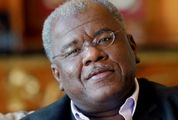
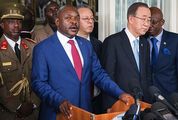




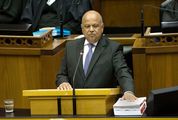
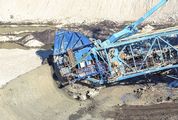
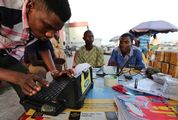

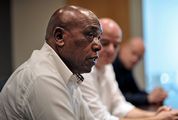








Change: -0.88%
Change: -1.16%
Change: -1.88%
Change: -0.02%
Change: -3.41%
Data supplied by Profile Data
Change: -1.60%
Change: 0.32%
Change: -0.88%
Change: 0.00%
Change: 0.44%
Data supplied by Profile Data
Change: 0.04%
Change: 0.36%
Change: 0.37%
Change: 0.07%
Change: -0.22%
Data supplied by Profile Data
Change: 0.46%
Change: 0.43%
Change: 0.20%
Change: 0.62%
Change: -0.64%
Data supplied by Profile Data